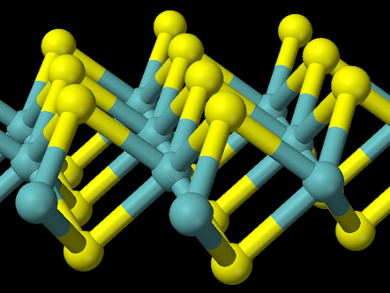Transition metal dichalcogenide monolayers (pictured) are materials with interesting and useful electronic properties. Tuning these properties can be done by exchanging one chalcogenide for another, e.g., by replacing sulfur with tellurium. However, this exchange can be difficult due to the low decomposition temperature of tellurides and the high activation barriers.
Young Hee Lee, Institute for Basic Science (IBS) and Sungkyunkwan University, both Suwon, Republic of Korea, and colleagues have developed an efficient process for the tellurization of monolayer MoS2 and WS2. The team uses a “sodium-scooter” reaction with Na2Te to introduce tellurium atoms from a Te/H2 vapor. The sodium anchors the telluride to the monolayer sulfide and acts as a catalyst that lowers the activation barrier. Thus, the reaction can be performed at 525 °C, which lies below the decomposition temperature of the transition metal tellurides.
Using this approach, the researchers were able to tune the bandgap and spin-orbit coupling properties of monolayer Mo and W sulfides by converting them to MoS2−xTex or WS2−xTex alloys. The team also prepared semiconducting 2H-MoTe2 and metallic 1T′-MoTe2 using the same method.
- Telluriding monolayer MoS2 and WS2 via alkali metal scooter,
Seok Joon Yun, Gang Hee Han, Hyun Kim, Dinh Loc Duong, Bong Gyu Shin, Jiong Zhao, Quoc An Vu, Jubok Lee, Seung Mi Lee, Young Hee Lee,
Nat. Commun. 2017.
https://doi.org/10.1038/s41467-017-02238-0




